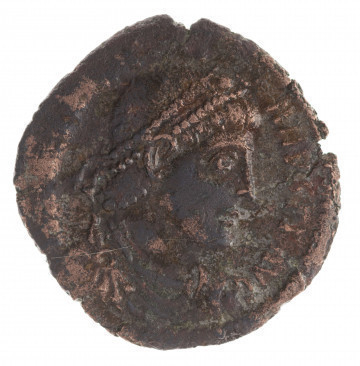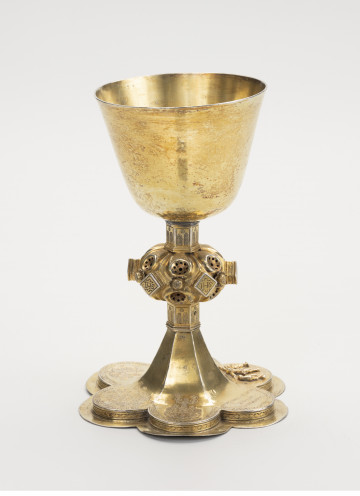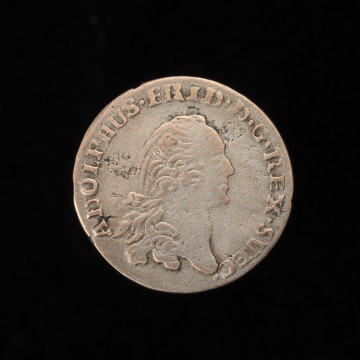
Follis of Valentinian I (367–375)
367 — 375
National Museum in Lublin
Part of the collection: Antique coins
In the middle of the 11th century, significant changes took place in Byzantine minting. Coins were struck with a new technique, thanks to which they gained the shape of a flattened bowl called trachea. Gold trachea appeared the earliest, followed by electron, silver and coin trachea. This specific form of Byzantine coins survived until the 14th century. During the reign of the Komnenian dynasty (1081-1185), a revolution also took place in the depictions and inscriptions of coins. The religious rhetoric was a result of the political situation of the time and the struggle against infidels. It was about emphasising the divine origin of the ruler and manifesting Christianity. The central motif of the obverses was the figure of Christ standing or sitting on the throne and the Virgin Mary. The ruler's figure in 'civilian' clothes, with insignia (sceptre with pennant, globe or cross) was placed on the reverse. There was a shift from Latin to Greek in the language of legends. This whole set of ideas was reflected on the coins of the last of the Komnenian family - Manuel I (1143-1180). The presented aspron was minted from coinage (an alloy of silver ca. 16% and bronze ca. 82%) and brought content indicating the divine lineage of the Emperor. Apologists described Manuel as the holiest among emperors, the most just, generous, and wise. The coin's obverse depicts Christ seated on a throne, accompanied by the Greek inscription: IC-XC (Jesus Christ). The reverse shows the scene of the crowning of the ruler by the Virgin Mary. The Saint, surrounded by a halo, crowns him with her right hand, while with her left, she blesses Manuel, standing next to her. The Emperor is dressed in an ornate robe (loros) and holds a sceptre with a pennant (labarum) and a globe topped with a cross in his hands. The legend boils down to the name of the ruler and Mary. After Manuel's death (1180), the Byzantine Empire was plunged into civil war. Many monetary images from the Komnenian period: figures of Christ, the Virgin Mary and saints passed into the minting of the successor states.
Genowefa Horoszko
Author / creator
Dimensions
cały obiekt: height: 4,5 mm
Object type
coin
Technique
minting
Material
billon
Creation time / dating
Creation / finding place
Owner
National Museum in Szczecin
Identification number
Location / status

367 — 375
National Museum in Lublin

1598
National Museum in Szczecin

1761
National Museum in Szczecin
DISCOVER this TOPIC
Castle Museum in Łańcut
DISCOVER this PATH
Educational path